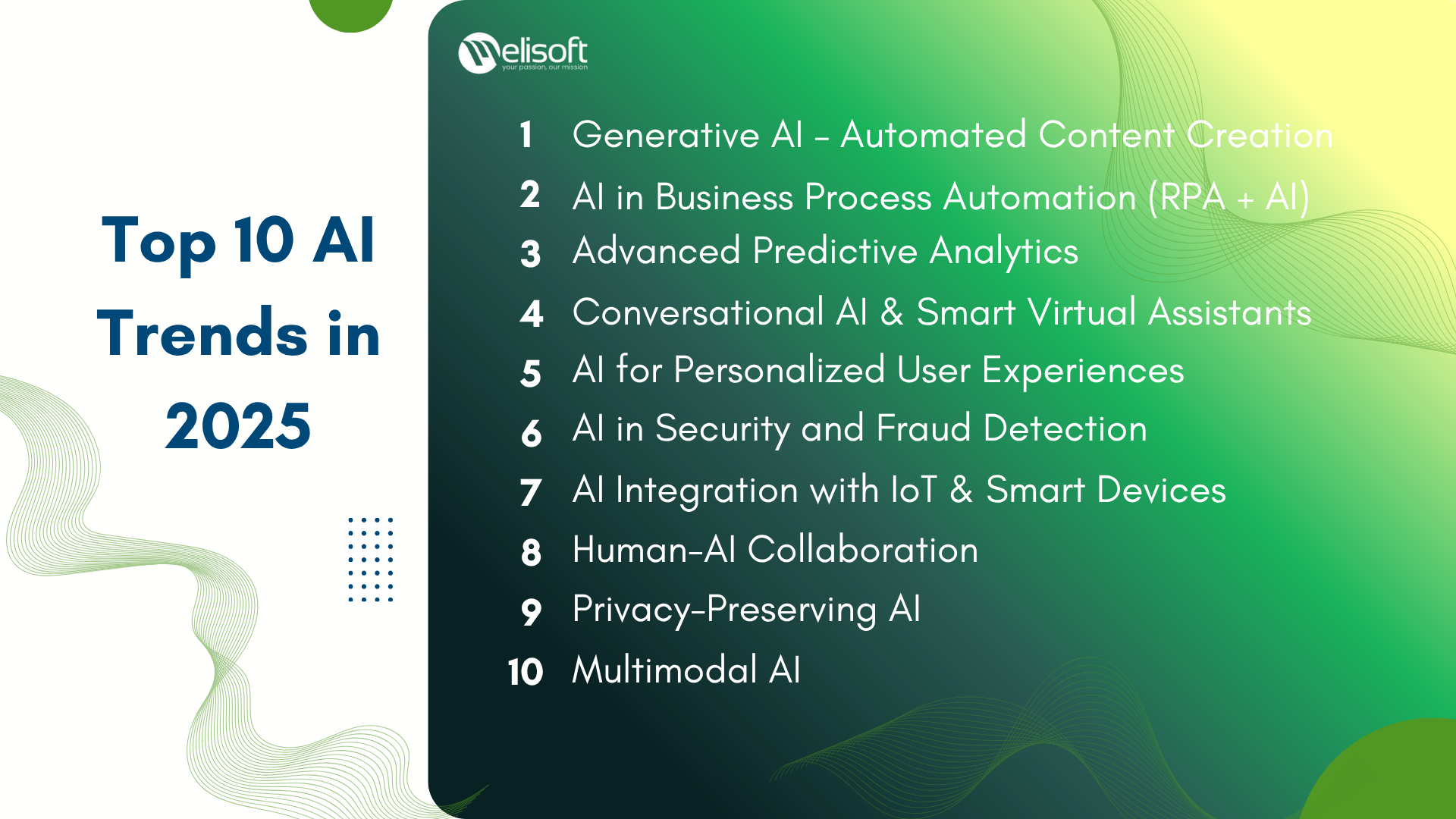
1. When Did AI Start Growing Rapidly?
AI is not a new technology. Its development history can be divided into several stages:
-
1950s – 1970s: AI concepts were introduced, focusing primarily on basic logic and algorithms.
-
1980s – 2000s: Machine learning emerged, with AI applications in healthcare, finance, and academic research.
-
2010 – Present: The rise of deep learning, big data, and cloud computing made AI widely accessible in real-world applications such as chatbots, recommendations, image, and speech recognition.
Especially from 2023 onward, large language models (LLMs) like ChatGPT and GPT-4, along with specialized AI platforms, have driven a surge of AI adoption in business, education, finance, and product development.
2. Why Businesses Need to Keep Up with the Latest AI Trends
Today’s businesses face global competition and rapid innovation. Keeping up with AI trends helps companies:
-
Boost operational efficiency: Automate repetitive tasks and reduce labor costs.
-
Personalize customer experiences: Predict behaviors and recommend products based on big data.
-
Make smarter decisions: Analyze large datasets for accurate forecasting.
-
Innovate products: Develop new AI-powered products and intelligent features.
-
Maintain a competitive edge: Companies slow to adopt AI risk falling behind in a digital market.
3. Top 10 AI Trends in 2025
Here are the 10 leading AI trends that every business should watch:
1. Generative AI – Automated Content Creation
-
AI models generate text, images, audio, and video automatically.
-
Applications: Content marketing, graphic design, media production.
2. AI in Business Process Automation (RPA + AI)
-
Combining Robotic Process Automation (RPA) with AI to automate complex workflows.
-
Applications: Invoice management, customer support, logistics.
3. Advanced Predictive Analytics
-
Machine learning and predictive analytics forecast demand and market trends.
-
Applications: FinTech, retail, supply chain management.
4. Conversational AI & Smart Virtual Assistants
-
Next-generation chatbots understand context, emotions, and support multiple languages.
-
Applications: 24/7 customer support, business personal assistants.
5. AI for Personalized User Experiences
-
AI learns user behaviors and delivers tailored experiences.
-
Applications: E-commerce, EdTech, online learning platforms.
6. AI in Security and Fraud Detection
-
AI identifies unusual behavior and detects fraud automatically.
-
Applications: FinTech, banking, e-commerce.
7. AI Integration with IoT & Smart Devices
-
AI enables IoT devices to self-learn, optimize energy, and enhance performance.
-
Applications: Smart homes, industrial manufacturing, logistics.
8. Human-AI Collaboration
-
AI assists humans in faster and more accurate decision-making.
-
Applications: Product design, data analysis, market research.
9. Privacy-Preserving AI
-
AI analyzes data while complying with GDPR and protecting personal information.
-
Applications: Healthcare, FinTech, educational platforms.
10. Multimodal AI
-
Combines text, image, audio, and video data for comprehensive results.
-
Applications: Content generation, object recognition, sentiment analysis.



Top 10 AI Trends in 2025 (IMG: Melisoft)
4. Melisoft – AI Applications in Software Development
Melisoft, a leading Vietnamese tech company, pioneers the integration of AI to optimize software development:
-
Meliplatform – Low-code AI: Shortens time from MVP → Go-to-market → Scale, integrating AI directly into products.
-
AI in EdTech: Melisoft use AI to personalize learning experiences.
-
AI-powered QA & Testing: Automatically detects bugs, reducing testing time.
-
AI Consulting for Startups & Enterprises: Helps choose the right technologies and integrate AI efficiently to maximize ROI.
Melisoft combines a product mindset with AI, developing software that ensures both excellent user experience and business impact.
_1762768002861.png)
Melisoft – AI Applications in Software Development
In 2025, AI will continue to reshape how businesses operate and create value. The AI trends above are not only opportunities but essential strategies to maintain competitiveness. Smart businesses will:
-
Adopt AI trends early and apply them to products and processes.
-
Collaborate with trusted tech partners like Melisoft for fast and effective AI integration.
-
Invest in multimodal AI, personalized AI, and automated AI to enhance customer experience and operational efficiency.
By staying updated and applying the latest AI trends, businesses can not only survive but thrive in the digital era of 2025.